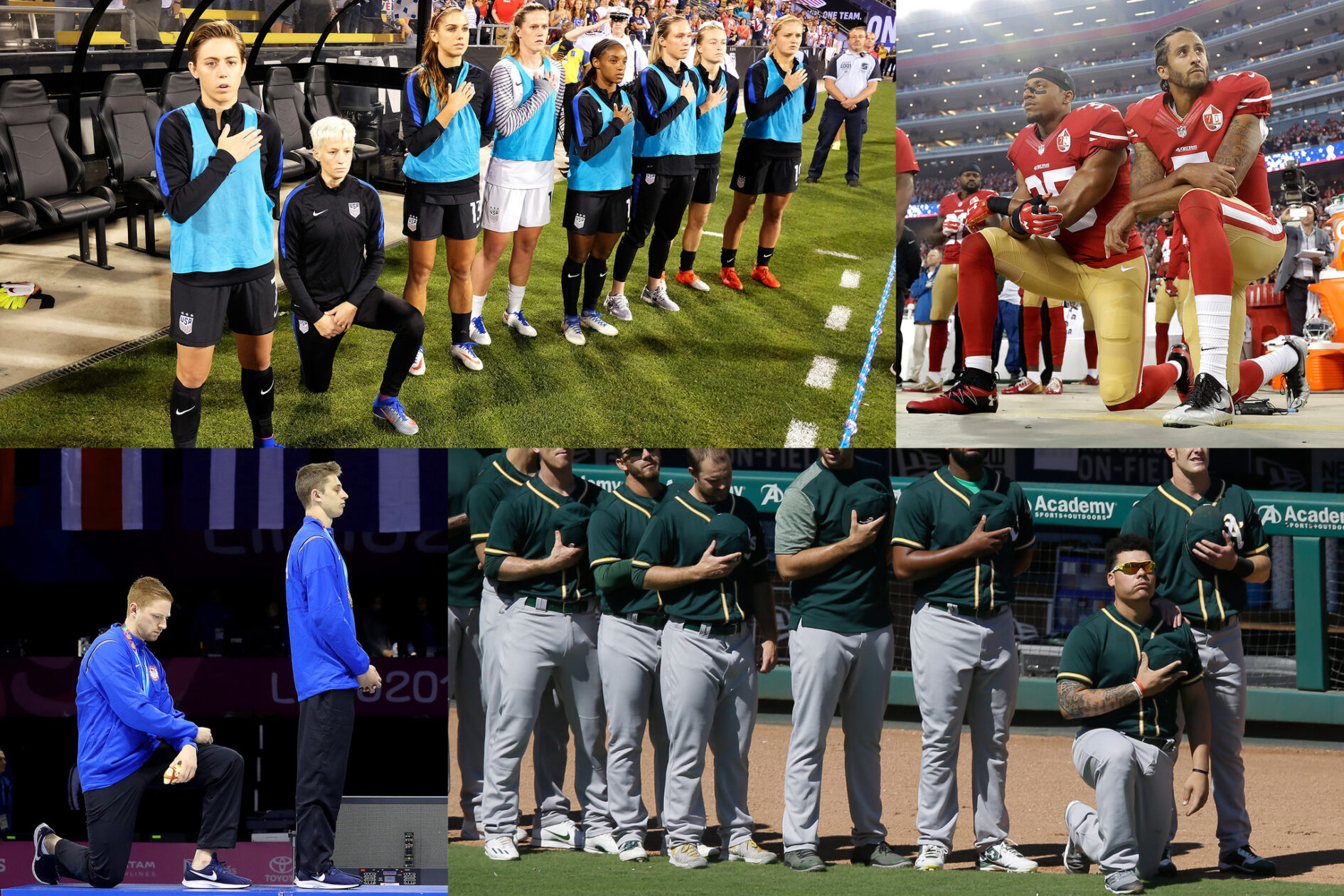Kneel in Protest: Players should be allowed
Players should be allowed to kneel in protest during the national anthem. Agree or disagree?
The debate over allowing players to kneel in protest during the national anthem deeply polarizes, touching on fundamental principles of freedom of expression, patriotism, and social justice. Here, we’ll explore arguments both in favor and against this form of protest.
Agree – Allowing Players to Kneel:
Freedom of Expression: Many argue that one of the fundamental principles of democratic societies, including the United States, is the right to freedom of expression.
Allowing players to kneel during the national anthem respects this right, enabling them to peacefully protest against perceived injustices and inequality.

Peaceful Protest: Kneeling during the national anthem is a non-violent form of protest. It allows athletes to draw attention to issues like racial discrimination, police brutality, and social inequality while not disrupting the event itself.
Raising Awareness: Kneeling has proven effective in drawing attention to important social issues.
By using their platform, athletes can amplify the voices of marginalized communities and encourage discussions about needed reforms.
Historical Precedents: Athletes have a long history of engaging in protests and social activism, from Muhammad Ali’s refusal to be drafted into the Vietnam War to Tommie Smith and John Carlos’ raised fists during the 1968 Olympics. These actions have contributed to meaningful change in society.
Disagree – Prohibiting Players from Kneeling:
Disrespect for the Flag: Opponents argue that kneeling during the national anthem disrespects the flag, the anthem, and the country. They see it as a symbol of ingratitude and a rejection of American values.
Some argue that using sports events as a platform for political or social protests is a misuse of the platform. They believe that viewers tune in for entertainment, and mixing sports with politics detracts from the game’s purpose.
Alternative Forms of Protest: Critics suggest athletes can engage in activism through community programs or funding social initiatives, avoiding symbolic acts during the anthem.
Polarization: Kneeling during the national anthem has divided fans, detracting from the enjoyment of sports for many. Some argue that sports should be a unifying force, not a source of division.
Conclusion
The question of whether to allow players to kneel during the national anthem is complex and divisive. It balances the principles of free expression with concerns about respect for national symbols and unity.
Ultimately, it depends on individual perspectives and the policies of sports organizations and teams in navigating this contentious issue. 온라인카지노사이트